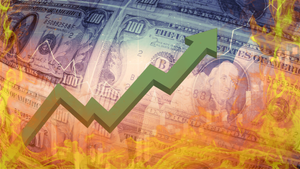
Russia's crude oil output saw a notable increase in September 2025, reaching 9.37 million barrels per day (bpd). This surge marks the highest monthly production gain for the nation since April, signaling a concerted effort to ramp up supply amidst fluctuating global energy demands. While this rise brings Russia significantly closer to its adjusted OPEC+ production target, the country still fell short by approximately 47,000 bpd, underscoring ongoing challenges in fully adhering to its international commitments.
This increase in Russian crude supply carries immediate and multifaceted implications for global oil markets. On one hand, it contributes to the overall availability of crude, potentially easing some supply concerns. On the other hand, the persistent shortfall against OPEC+ targets, coupled with internal disruptions from geopolitical events, highlights the complex and often volatile dynamics at play in the international energy landscape.
Russia's Production Push Amidst Sanctions and Strikes
In September 2025, Russia's crude oil production climbed to 9.37 million bpd, a substantial jump of roughly 193,000 bpd from its August output of 9.17 million bpd. This represents a significant acceleration in production, especially when compared to the more modest 50,000 bpd increase seen between July and August. The country's Deputy Prime Minister Alexander Novak acknowledged the earlier lags but affirmed a gradual increase, stating Russia's commitment to fulfilling its quota.
The OPEC+ alliance, which includes Russia, has been progressively easing its previously enacted production cuts. Russia's quota for September was set at 9.415 million bpd, a slight revision from an initial target to account for past overproduction. Despite the impressive growth, the 47,000 bpd deficit indicates that Russia continues to grapple with consistent compliance, a historical pattern for the nation within the OPEC+ framework. The country has previously pledged additional compensatory cuts, with its schedule being updated four times this year alone.
However, Russia's production narrative is further complicated by significant internal challenges. Ukrainian drone strikes have severely impacted Russian oil refineries, with roughly one in three refineries affected since early August. This disruption to domestic processing capacity has compelled Russian oil producers to reroute crude oil, originally destined for internal refining, towards overseas export channels. Consequently, Russian crude oil exports rebounded in September, with revised upward plans for exports from western ports by 11% compared to initial schedules. Analysts project that close to 500,000 bpd of refining capacity could remain offline in October, with crude processing volumes reportedly falling to 4.86 million bpd in October, nearly 10% lower than July levels. While this diversion could increase global crude supply, it has simultaneously led to a decline in Russia's exports of refined products, impacting key importers like Brazil and Turkey, and even prompting Russia to import gasoline from Belarus to address domestic fuel shortages.
Corporate Winners and Losers in a Shifting Landscape
The evolving situation surrounding Russia's crude oil output presents a mixed bag for public companies operating within the energy sector, both domestically and internationally.
Russian state-owned oil giants such as Rosneft (MCX: ROSN) and Gazprom Neft (MCX: SIBN) are directly impacted. While the increased crude production allows them to capitalize on higher export volumes, the damage to domestic refining capacity means a shift in their operational strategy. They are likely to benefit from increased crude sales abroad, but at the expense of refined product margins domestically. The necessity to divert crude to export markets could lead to logistical challenges and potentially discounted prices to secure buyers, especially under the shadow of Western sanctions. Furthermore, the reliance on external markets for refined products or the need for imports, as seen with Belarus, could strain their balance sheets.
Conversely, international energy traders and refiners in countries not adhering to stringent sanctions might see opportunities. Companies involved in shipping and logistics for crude oil could experience increased demand for their services as Russia seeks to move more raw crude to global markets. However, the overall uncertainty surrounding Russian supply, including the potential for future disruptions or changes in OPEC+ policy, might deter some long-term investments. Companies that typically rely on Russian refined products, such as those in Brazil and Turkey, may need to seek alternative suppliers, potentially benefiting refiners in other regions or leading to higher procurement costs for these nations.
Wider Significance: Geopolitical Chess and Global Energy Balance
Russia's fluctuating oil output and its compliance—or lack thereof—with OPEC+ targets are more than just economic figures; they are critical indicators of broader geopolitical trends and global energy stability. This event highlights the ongoing tension between Russia's economic imperative to export oil and its strategic alignment within the OPEC+ framework, all while navigating the complexities of Western sanctions and internal security challenges.
The increase in Russian crude exports, driven by damaged domestic refining capacity, underscores the fragility of the global energy supply chain. While it might temporarily alleviate concerns about crude availability, it simultaneously exacerbates shortages in refined products, creating a domino effect across different energy markets. This situation fits into a broader trend of energy market fragmentation, where geopolitical conflicts directly impact supply routes and product availability, forcing nations to diversify their energy sources and suppliers.
Historically, Russia has played a pivotal role in balancing global oil markets. Its current predicament, however, demonstrates how political and military events can rapidly reshape established supply dynamics. The continuous adjustments to Russia's OPEC+ quota and its struggle to meet targets also put pressure on the cohesion of the alliance. Other OPEC+ members might view Russia's inconsistent compliance as a threat to the group's overall strategy and market influence. Regulatory and policy implications are significant, as Western nations continue to monitor Russian oil revenues, potentially leading to further tightening of sanctions if perceived loopholes are exploited or if Russia's actions are seen as undermining global stability.
What Comes Next: Navigating a Volatile Future
Looking ahead, the short-term outlook for Russia's oil sector and global supply remains highly volatile. In the immediate future, Russia will likely continue to prioritize crude oil exports to compensate for reduced domestic refining capacity and to maintain revenue streams. This could keep global crude prices somewhat subdued, assuming sufficient demand. However, the persistent shortage of refined products could lead to price spikes in gasoline, diesel, and other fuels, especially in regions dependent on Russian exports. Further Ukrainian drone attacks could intensify these trends, forcing Russia to seek more robust defensive measures for its energy infrastructure.
In the long term, Russia faces critical strategic pivots. The country must decide whether to invest heavily in repairing and protecting its refining capacity or to permanently reorient its energy strategy towards being a predominantly crude exporter. This decision will have profound implications for its economic structure and its role in global energy markets. For OPEC+, Russia's inconsistent compliance will continue to be a challenge, potentially leading to renewed negotiations on quotas or a re-evaluation of the alliance's collective strategy.
Market opportunities may emerge for alternative refiners and logistics companies capable of handling increased crude volumes. Conversely, challenges will persist for countries and industries reliant on stable supplies of refined products. Potential scenarios range from a relatively stable, albeit reconfigured, Russian export model to continued disruptions that could trigger significant price volatility and supply shocks. Investors should closely monitor geopolitical developments, OPEC+ decisions, and Russia's infrastructure resilience, as these factors will be crucial in shaping market outcomes.
Wrap-Up: A Market on Edge
Russia's September crude oil output, while demonstrating a significant increase, encapsulates the complex and precarious state of global energy markets. The nation's push to boost production, even as it falls slightly short of OPEC+ targets, is a critical takeaway. This effort to increase supply is simultaneously undermined by internal vulnerabilities, particularly the extensive damage to its refining infrastructure, which forces a redirection of crude to export markets while creating domestic refined product shortages.
Moving forward, the market will remain on edge, influenced by the interplay of Russia's production capabilities, its adherence to OPEC+ agreements, and the ongoing geopolitical landscape. The diversion of crude to international markets may offer some relief to global crude supply, but the corresponding decline in refined product exports creates new pressures. Investors should continue to watch for further developments in the conflict, any changes in OPEC+ policy, and Russia's long-term strategy for its energy sector. The enduring significance of these events lies in their potential to reshape global energy flows, challenge established alliances, and introduce sustained volatility into an already dynamic market.
This content is intended for informational purposes only and is not financial advice





